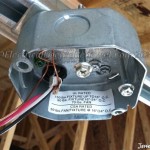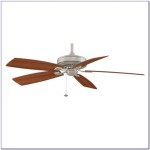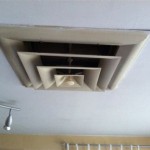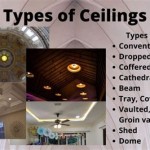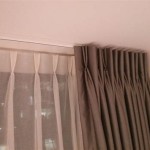How To Remove Popcorn Ceiling With Asbestos Safely
Popcorn ceilings, also known as acoustic ceilings, were a popular choice in residential construction from the 1950s through the 1980s. Their textured surface helped to conceal imperfections and reduce sound reverberation. However, many of these ceilings contain asbestos, a naturally occurring mineral fiber once widely used in building materials for its fire-resistant and insulating properties. If the popcorn ceiling in a home was installed before the late 1980s, there is a high probability it contains asbestos. Dealing with asbestos-containing materials requires careful consideration and adherence to safety protocols to minimize the risk of exposure. This article outlines the steps involved in safely removing a popcorn ceiling containing asbestos. This process is inherently risky, and in many cases, professional abatement is strongly recommended.
Prior to undertaking any removal activities, the first step is to confirm the presence of asbestos in the popcorn ceiling. Visual inspection alone is insufficient. A qualified asbestos testing laboratory must analyze a sample of the ceiling material. Sampling should be performed by a certified professional to minimize the risk of fiber release during the process. The laboratory will provide a report indicating the percentage of asbestos present. If the ceiling material contains more than 1% asbestos, it is considered an asbestos-containing material (ACM) and requires specific handling procedures.
Understanding the Risks of Asbestos Exposure
Asbestos exposure poses significant health risks. When disturbed, asbestos fibers become airborne and can be inhaled or ingested. Prolonged exposure to asbestos fibers can lead to serious and potentially fatal diseases, including asbestosis (a chronic lung disease), lung cancer, and mesothelioma (a rare cancer affecting the lining of the lungs, abdomen, or heart). The latency period for these diseases can be decades, meaning symptoms may not appear until many years after initial exposure. Due to these health risks, it is crucial to prioritize safety and minimize asbestos fiber release during any removal process.
Even small amounts of asbestos exposure can contribute to the risk of developing asbestos-related diseases. Factors such as the duration and frequency of exposure, the type of asbestos fibers, and individual susceptibility can influence the likelihood of developing health problems. The risk is especially elevated for smokers. Given the potential health consequences, it is imperative to implement stringent safety measures when handling asbestos-containing materials.
Safety Precautions and Equipment
Before starting the removal process, comprehensive safety precautions must be implemented to protect both the individual performing the work and other occupants of the building. This includes isolating the work area and wearing appropriate personal protective equipment (PPE). The work area should be sealed off from the rest of the building using heavy-duty plastic sheeting and duct tape. All openings, including doors, windows, and ventilation ducts, need to be completely sealed to prevent the spread of asbestos fibers. It is advisable to cover all surfaces within the work area with plastic sheeting to facilitate cleanup.
The necessary PPE includes a full-body disposable suit, a respirator with HEPA (High-Efficiency Particulate Air) filters, gloves (nitrile or rubber recommended), and eye protection (goggles or a full face shield). The respirator should be properly fitted and tested to ensure a tight seal. It is crucial to follow the manufacturer's instructions for the respirator's use and maintenance. The disposable suit should cover the entire body, and the gloves should be taped to the sleeves of the suit to prevent asbestos fibers from entering. Eye protection is essential to protect the eyes from irritation and exposure to asbestos fibers. The PPE should be worn throughout the entire removal process and disposed of properly after use.
Additional equipment needed includes a HEPA-filtered vacuum cleaner, a pump sprayer, a scraper, a utility knife, plastic bags (6-mil thickness or greater) for waste disposal, duct tape, a drop cloth, and water mixed with a surfactant (such as dish soap) to wet the ceiling and minimize dust generation. The HEPA-filtered vacuum cleaner is designed to capture microscopic particles, including asbestos fibers, and prevent them from being released back into the air. A standard vacuum cleaner is not suitable for this task, as it may release asbestos fibers into the air.
The Removal Process: A Step-by-Step Guide
Following the safety precautions and gathering the necessary equipment, the removal process can commence. This process should be performed with meticulous care and attention to detail to minimize the release of asbestos fibers. It is stressed again that professional abatement is often the safest and most recommended course of action.
Step 1: Wetting the ceiling. Using the pump sprayer, thoroughly wet the popcorn ceiling with the water and surfactant mixture. The goal is to saturate the ceiling material without causing it to drip excessively. The water helps to bind the asbestos fibers and prevent them from becoming airborne. A surfactant, such as dish soap, helps to improve the water's ability to penetrate the ceiling material.
Step 2: Scraping the ceiling. After allowing the water to soak into the ceiling for several minutes, use the scraper to gently remove the popcorn texture. Work in small sections and avoid applying excessive pressure, which could cause the material to crumble and release more fibers. Collect the scraped material in a container or directly onto a drop cloth placed beneath the work area. Keep the ceiling material consistently wet throughout the scraping process to minimize dust generation.
Step 3: Bagging and sealing the waste. Carefully transfer the scraped material into the plastic bags. Avoid overfilling the bags, as this can make them difficult to handle and increase the risk of tearing. Seal the bags tightly with duct tape, ensuring that no material can escape. Double-bagging is recommended to provide an extra layer of protection. Label each bag clearly as containing asbestos waste.
Step 4: Cleaning the work area. After removing the popcorn texture, thoroughly clean the work area with the HEPA-filtered vacuum cleaner. Vacuum all surfaces, including the walls, floor, and any equipment used during the removal process. Pay particular attention to corners and crevices where asbestos fibers may accumulate. After vacuuming, wipe down all surfaces with a damp cloth to remove any remaining residue.
Step 5: Disposal of asbestos waste. Asbestos waste must be disposed of in accordance with local, state, and federal regulations. Contact the local environmental protection agency or waste management authority to determine the proper disposal procedures. In many cases, asbestos waste must be transported to a designated landfill that accepts asbestos-containing materials. It is typically required to manifest the waste, documenting the source, quantity, and destination of the asbestos-containing material. Improper disposal of asbestos waste can result in significant fines and penalties.
Step 6: Final inspection and air testing. After completing the removal and cleaning process, it is advisable to have a qualified asbestos inspector conduct a final inspection to ensure that all asbestos-containing material has been removed and that the work area is safe. Air testing may also be performed to verify that the air is free of asbestos fibers. This testing typically involves collecting air samples and analyzing them in a laboratory. If the air samples exceed the permissible exposure limit (PEL) for asbestos, additional cleaning and removal efforts may be required.
Potential Challenges and Complications
Several potential challenges and complications can arise during the removal of a popcorn ceiling containing asbestos. These challenges can increase the risk of asbestos exposure and require adjustments to the removal process. Uneven surfaces, such as those with cracks or holes, can make it challenging to remove the popcorn texture evenly. In such cases, it may be necessary to use a patching compound to repair the surface before removing the popcorn texture.
Another potential challenge is the presence of multiple layers of paint or other coatings on the popcorn ceiling. These coatings can make it difficult for the water and surfactant mixture to penetrate the ceiling material, hindering the removal process. In such cases, it may be necessary to score the surface of the ceiling with a utility knife before wetting it to improve penetration. Additionally, if the popcorn ceiling is heavily textured or contains a significant amount of asbestos, the removal process may be more time-consuming and labor-intensive.
Undisturbed asbestos fibers pose little to no risk. However, if the popcorn ceiling is in poor condition or has been damaged, it may be more likely to release asbestos fibers into the air. In such cases, it is crucial to take extra precautions to minimize dust generation during the removal process. This may involve using a more powerful pump sprayer to thoroughly wet the ceiling, working in smaller sections, and using a HEPA-filtered vacuum cleaner to immediately clean up any debris.

Asbestos In Popcorn Ceilings Removal Testing And Safety
Home Help How To Scrape Off Ceiling Popcorn Update Your
How To Properly Remove Asbestos Containing Spray On Textured Ceilings For Home Owners

The Joy Of Popcorn Ceiling Removal Centsational Style

Asbestos In Popcorn Ceilings Is Your Family At Risk

Asbestos In Popcorn Ceilings Removal Testing And Safety
/peanutbutter-seo-ottawa-copy3/images/Popcorn-ceiling-removal-asbestos.jpg?strip=all)
Asbestos Popcorn Ceiling Ottawa Facts Removal

How Can You Tell If There Is Asbestos In Popcorn Ceilings

How Common Is Asbestos In Popcorn Ceilings The Ferraro Law Firm

Asbestos Popcorn Ceiling A Diy Remodelling 123
Related Posts

